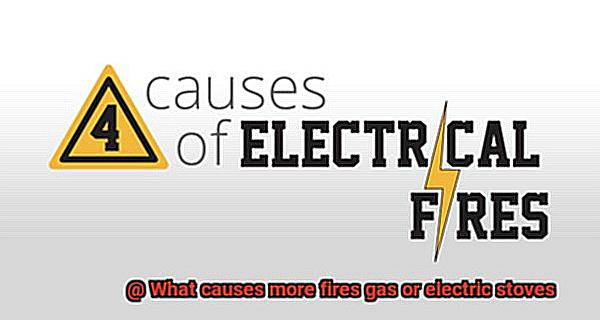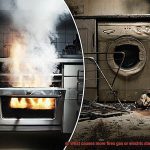Cooking is a daily ritual that we all cherish, whether you’re a seasoned chef or just trying to whip up something quick and easy. But with every cooking source comes the risk of fire. And when it comes to kitchen fires, gas and electric stoves are often the culprits. So which one is more likely to ignite a blaze?
The debate on this topic has been raging for years, but the answer may surprise you. Gas stoves, with their open flames and potential ignition sources like pilot lights, pose a higher risk of starting a fire than electric stoves. A gas leak can quickly escalate into a dangerous inferno, making it crucial to take extra precautions when using one.
But don’t let your guard down if you have an electric stove. Leaving pots and pans unattended or using damaged cords or outlets can also lead to kitchen fires. It’s important to be aware of the dangers and take steps to prevent them.
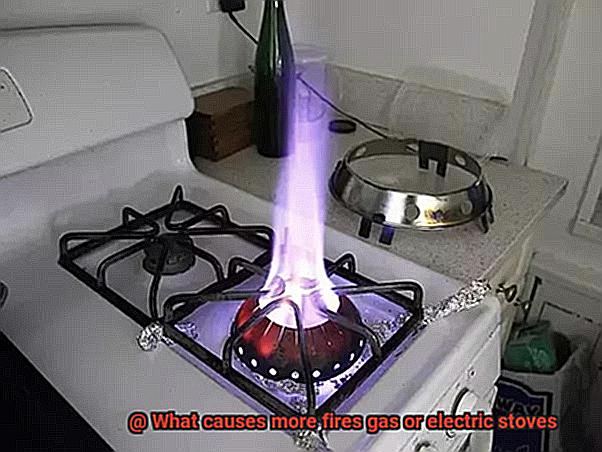
In this blog post, we’ll explore the causes of kitchen fires, the risks associated with gas and electric stoves, and practical tips for keeping your home safe while cooking up a storm. So grab your apron and let’s get started.
Contents
Overview of Gas and Electric Stoves
If you’re in the market for a new stove, it’s important to understand the differences between gas and electric stoves and their potential fire risks. Gas stoves are powered by natural gas or propane and use an open flame to heat cookware. This feature makes them more prone to igniting nearby flammable materials such as curtains or cooking oils. Gas stoves can also produce carbon monoxide if not properly vented, which can be lethal in high concentrations. To avoid these dangers, it’s crucial to ensure proper ventilation for gas stoves and regularly inspect all stove components.
Electric stoves, on the other hand, use heating elements to generate heat. Although they don’t have an open flame, their heating elements can become extremely hot and ignite nearby materials if they come into contact with them. Leaving a pot or pan on an electric burner for too long can cause it to overheat and potentially start a fire. Additionally, using cookware that isn’t appropriate for an electric stove (such as glass or ceramic) can also lead to fires.
It’s important to note that both types of stoves can be safe when used properly. However, homeowners must take precautions to prevent accidents and keep themselves and their homes safe. Some tips for preventing fires include keeping flammable materials away from the stove, regularly inspecting and maintaining all stove components, ensuring proper ventilation for gas stoves, and never leaving cooking food unattended.
Statistics on Home Fires
When it comes to home fires, the statistics are alarming. In 2019, there were over 350,000 reported home structure fires in the United States alone, resulting in billions of dollars in property damage, injuries, and even death. The leading cause of these home fires is cooking, with stoves and cooktops being involved in nearly half of all reported home cooking fires.
While gas stoves are the primary culprit, it’s important to note that they are also more commonly used in households than electric stoves. However, both types of stoves pose significant fire risks if not used safely. According to the National Fire Protection Association (NFPA), electric ranges have a higher incidence of fatality when cooking fires occur due to their longer cooling time after being turned off.
To prevent such devastating events from occurring, it’s vital to practice safe cooking habits regardless of the type of stove you have. This includes never leaving food unattended on the stove, keeping flammable materials away from the stove, and ensuring proper ventilation when using a gas stove to prevent gas buildup.
Choosing the right stove for your kitchen is also an essential factor to consider in minimizing fire risks. Gas stoves have an open flame that can easily ignite flammable materials while electric stoves have heating elements that can become dangerously hot and cause fires if left unattended or used with inappropriate cookware.
Furthermore, statistics from the NFPA reveal that cooking-related home fires result in thousands of civilian deaths, injuries, and property damage each year. In 2019 alone, there were 3,704 civilian deaths and 16,600 civilian injuries caused by home structure fires.
Risks of Gas Stoves
With the benefits come certain risks that you need to be aware of to keep your home and family safe.
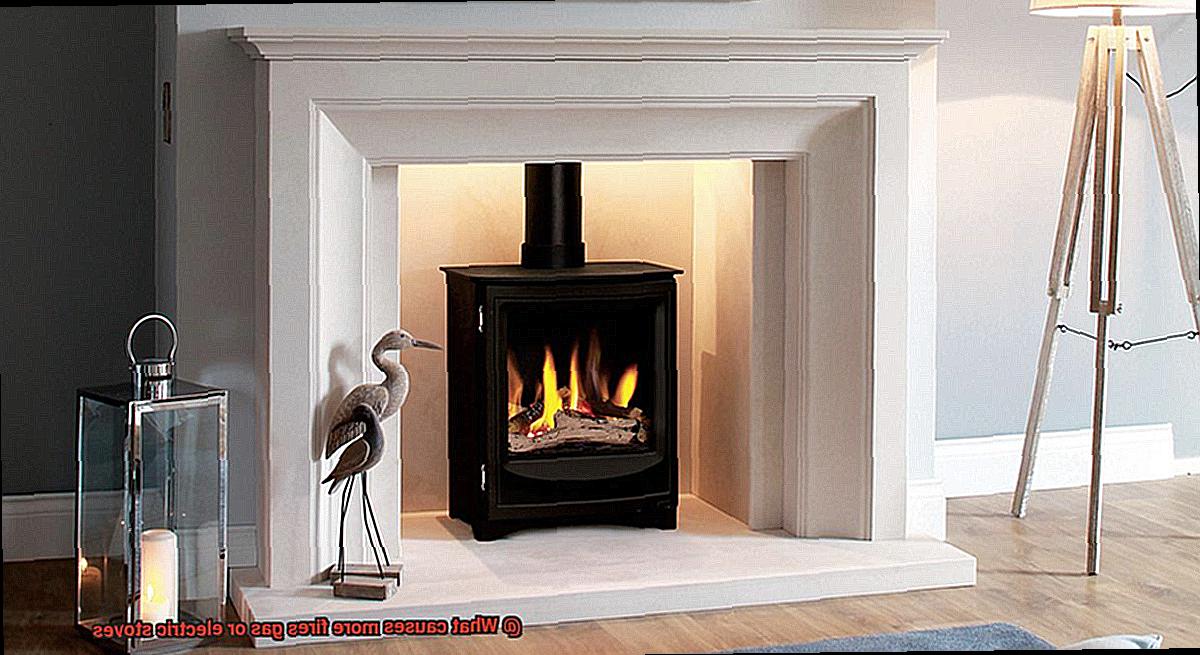
Gas leaks are one of the most significant risks associated with gas stoves. Faulty installation, wear and tear, or damage to gas lines can lead to a leak. Even a small leak can quickly escalate into a dangerous situation as gas is highly flammable. To prevent gas leaks, it’s crucial to have your gas stove regularly inspected by licensed professionals. Keep an ear out for hissing sounds or look for the smell of rotten eggs, which is actually the odorant added to natural gas to make it detectable.
Carbon monoxide poisoning is another potential risk of using gas stoves. Carbon monoxide is a colorless and odorless gas that can result from improper ventilation or incomplete combustion of natural gas. Exposure to carbon monoxide can cause headaches, dizziness, nausea, and even death in severe cases. To prevent carbon monoxide poisoning, ensure your kitchen is properly ventilated and install carbon monoxide detectors in your home.
Apart from these risks, gas stoves also pose a fire hazard. Flammable materials placed too close to the stove burners or in contact with hot surfaces can easily ignite, leading to devastating fires. Keep flammable materials away from your stove and be cautious when using flammable liquids in the kitchen to prevent fires.
Risks of Electric Stoves
Electric stoves have become a popular choice for many households due to their convenience and ease of use. However, it’s important to be aware of the risks associated with electric stoves. Here are some potential hazards that come along with using electric stoves:
- Electrical fires: Electric stoves rely on electricity to heat up the burners and cook food, which means there is always a risk of electrical malfunctions or wiring issues that can lead to a fire. It’s crucial to never leave flammable items such as paper towels or oven mitts too close to an electric burner as this can easily start a fire.
- Burns or electrocution: Unlike gas stoves that emit visible flames when burners are on, electric burners can be difficult to see when they’re hot. This can lead to accidental burns if someone touches a hot burner without realizing it’s on.
- Power outages or electrical surges: Electric stoves require a significant amount of power to operate, which makes them more susceptible to power outages or electrical surges. These types of incidents can damage the stove itself and pose a risk for fires or other hazards.
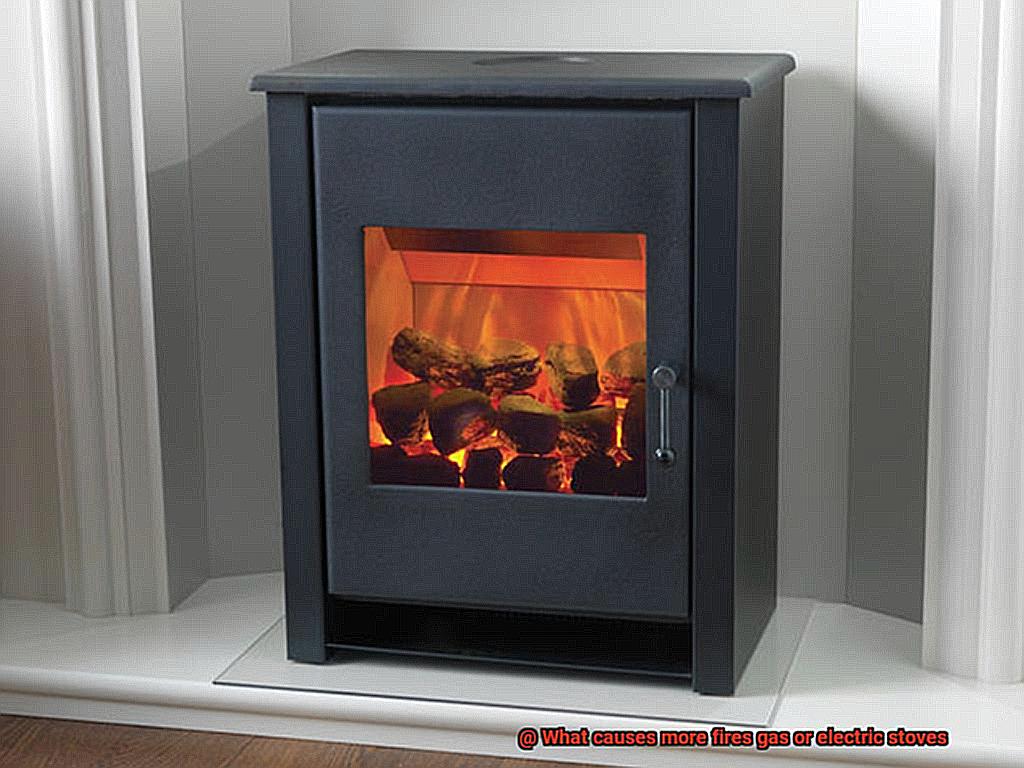
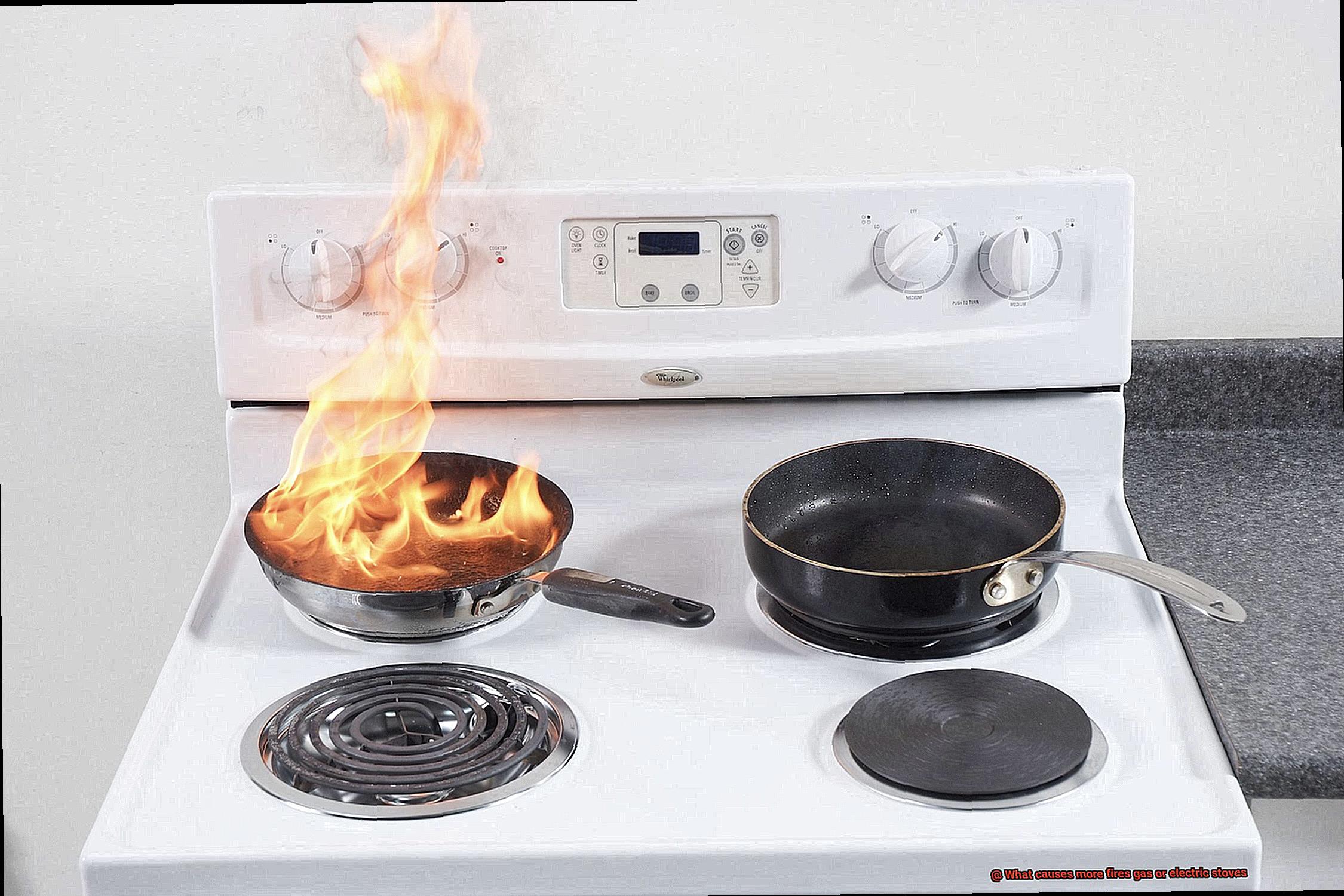
To minimize these risks, it’s essential to properly install and maintain electric stoves. Here are some tips to follow:
- Regularly clean the burners and surrounding area.
- Ensure that all wiring and electrical components are in good condition.
- Keep flammable items away from the stove while it’s in use.
- Follow all safety guidelines provided by the manufacturer.
- Never leave an electric stove unattended while it’s in use.
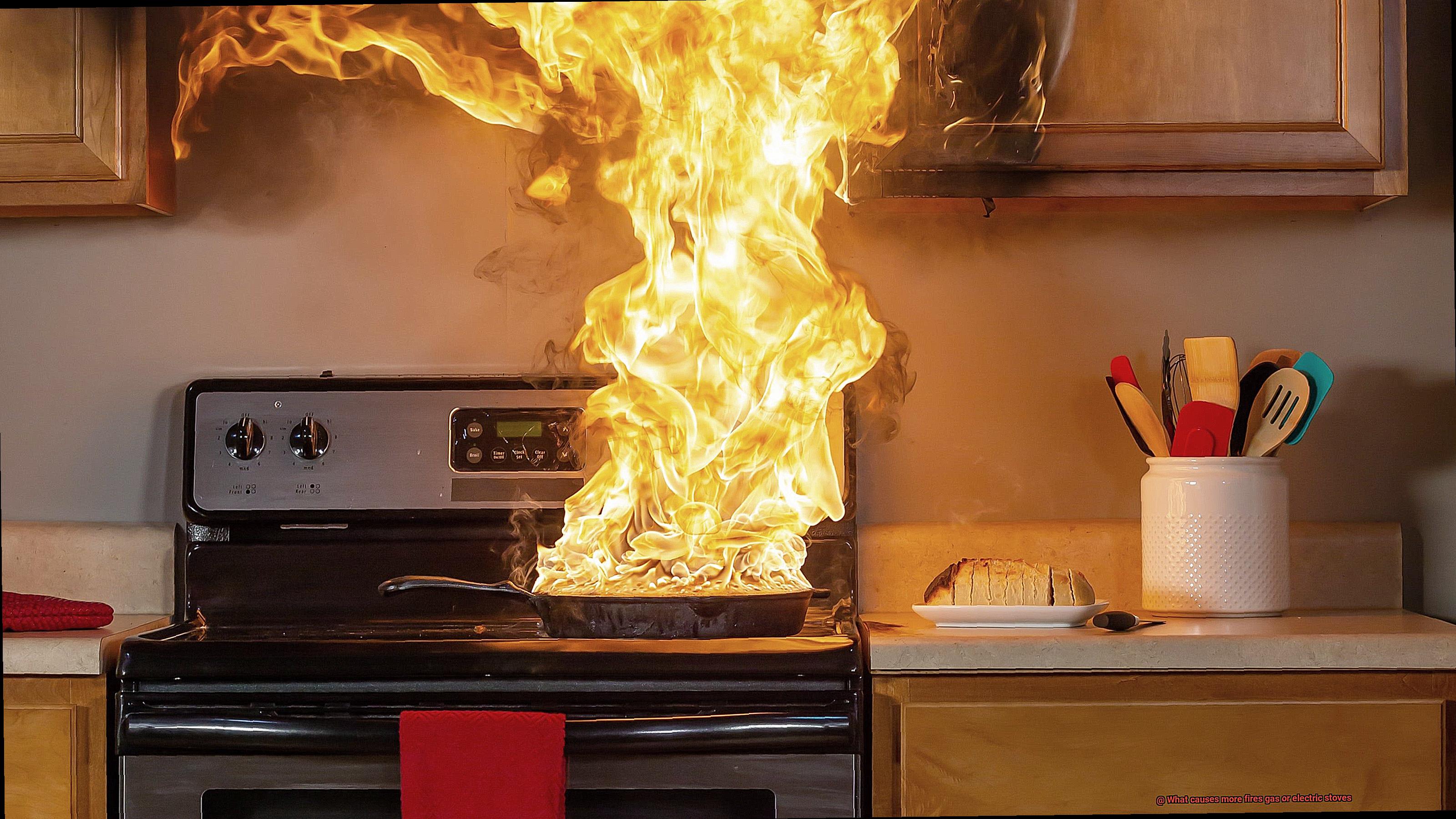
Safety Tips for Gas Stove Owners
Gas stoves are a popular choice for many households, but they do come with their own set of safety concerns. It is important for gas stove owners to be aware of the potential risks and take necessary precautions to prevent fires and accidents. Here are some safety tips for gas stove owners:
Firstly, keep the area around the stove clear of any flammable materials such as paper towels, curtains, or dishcloths. It’s essential to maintain a minimum distance of three feet between the stove and any combustible material. This will prevent any accidental fires from starting.
Installing a smoke detector near the kitchen or cooking area is also crucial. A smoke detector is an essential safety device that can alert you in case of a fire. Make sure to test it regularly and replace batteries as needed.
Using appropriate cookware is also important for gas stove safety. Only use pots and pans that are appropriate for gas stoves and have flat bottoms to ensure even heat distribution. Lightweight or thin pans can easily tip over and cause spills, increasing the risk of fire.
Cleaning your gas stove regularly is also essential for preventing fires. Grease and food particles can accumulate on the burners and cause fires if not cleaned properly. Use a non-abrasive cleaner to wipe down the surface and burners regularly, making sure to remove any spills or grease.
Lastly, never leave your gas stove unattended while cooking. If you need to leave, turn off the burner or take the pot off the stove. This will prevent any potential fire hazards from occurring.
Safety Tips for Electric Stove Owners
Electric stoves have become a staple in modern kitchens, but they still pose safety risks if not used carefully. As an expert on this topic, I have researched and compiled a list of safety tips that electric stove owners should follow to prevent fires and other accidents.
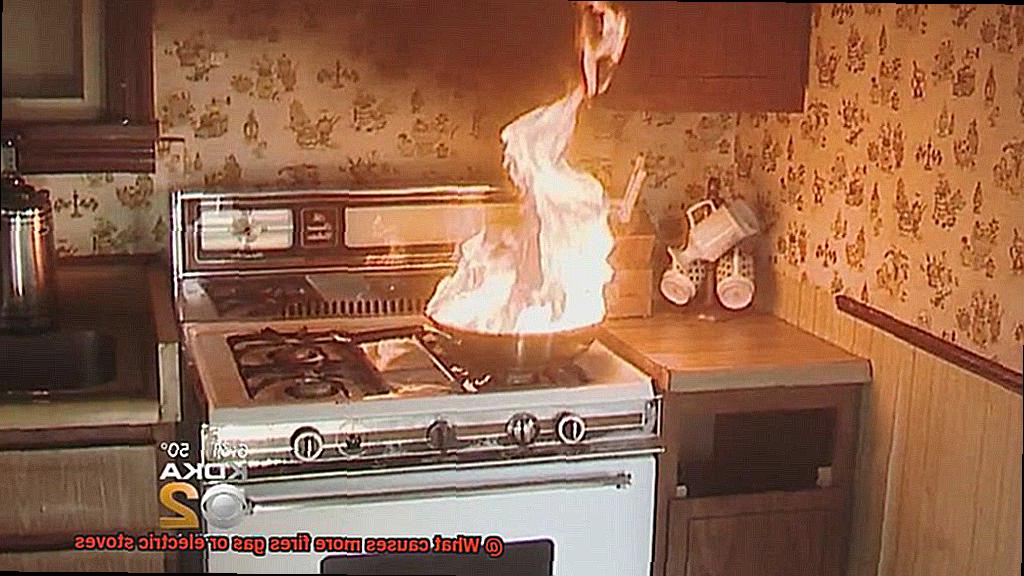
Tip #1: Keep the stove clean and clear of any debris or spills.
A dirty stove can easily catch fire when food particles or liquids are left on the burner. Wipe down the stove after each use and clean any spills immediately.
Tip #2: Only use cookware that is designed for electric stoves.
Using the wrong type of cookware can cause a fire or damage the stove. Pots and pans with flat bottoms made of materials safe for electric stovetops such as stainless steel or aluminum are recommended. Avoid using glass or ceramic cookware as they can crack or shatter due to high heat levels.
Tip #3: Always turn off the stove when not in use.
Leaving a burner on can start a fire, even if nothing is cooking on it. Double-check that all burners are turned off before leaving the kitchen.
Tip #4: Never leave the kitchen while cooking.
It’s easy to get distracted, but it only takes a few seconds for a fire to start. It is recommended to stay in the kitchen while cooking and to turn off the stove if you need to leave the room for any reason.
Tip #5: Keep flammable objects away from the stove while it’s in use.
Towels, pot holders, and paper are examples of flammable materials that should be kept away from the stove. These items can easily catch fire if they come into contact with a hot burner.
Tip #6: Have a fire extinguisher nearby in case of an emergency.
It’s always better to be prepared, so make sure you have a fire extinguisher nearby and that everyone in your household knows how to use it.
What Causes More Fires: Gas or Electric?
As per the National Fire Protection Association, cooking equipment causes almost half of all home fires and 21% of home fire deaths. So let’s dive into the science behind these stoves.
Gas stoves are known for their efficiency and quick heating capabilities, but they also pose a greater risk of causing fires due to gas leaks. Natural gas is highly combustible and if there is a leak, it can ignite and cause an explosion or fire. This can happen if there are loose connections, damaged gas lines, or faulty valves. Therefore, it is crucial to have a professional inspect the gas stove regularly to detect any potential leaks and ensure it is operating safely.
On the other hand, electric stoves are less likely to cause fires due to their design. They use heating elements that are sealed within the stove’s surface, eliminating the risk of an open flame. However, electric stoves can still cause fires if they are not used properly. For example, leaving flammable items such as paper towels or oven mitts on a hot electric stove can easily ignite and cause a fire.
Overall, while both types of stoves have their unique hazards, gas stoves have a higher risk of causing fires due to the potential for gas leaks. But don’t worry. With proper maintenance and safe cooking practices, you can minimize the risk of fire regardless of which type of stove you use.
Here are some tips to keep your stove safe:
- Keep your stove clean and clear of debris
- Always turn off the stove when not in use
- Never leave the kitchen while cooking
- Use appropriate cookware
- Keep flammable objects away from the stove
- Have a fire extinguisher nearby in case of emergency.
CcAJ3_-Hou8″ >
Conclusion
Cooking is an integral part of our daily routine, but it can also be a dangerous activity if proper safety measures are not taken. Gas and electric stoves are two of the most common types of stoves used in households, each with its own set of unique risks.
Gas stoves have a higher risk of causing fires due to gas leaks, which can occur if there is a malfunction in the stove’s components or if the stove is not properly maintained. On the other hand, electric stoves can still cause fires if they are left unattended or if flammable materials are placed too close to the heating elements.
To keep your home safe while cooking, it’s crucial to follow some basic safety guidelines. Always keep flammable materials away from the stove and make sure that you regularly inspect and maintain all stove components. For gas stoves, ensure proper ventilation to prevent gas build-up. Additionally, never leave cooking food unattended as this can lead to disastrous consequences.
Statistics reveal that cooking-related home fires result in thousands of civilian deaths, injuries, and property damage each year. Therefore, it’s vital to practice safe cooking habits regardless of the type of stove you have.
By following these tips and being aware of potential hazards associated with gas and electric stoves, you can minimize the risk of fire in your home and enjoy your daily ritual of cooking without worry. It’s also important to choose the right stove for your kitchen and follow all safety guidelines provided by the manufacturer.

